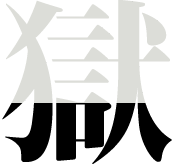
地獄の門
Running your mouse over the work or tapping it on your screen will allow you to see the VR (virtual reality). This will enable you to appreciate the work from a variety of angles and heights.
【How to use】
For PCs:
Zooming in and out: Use the scroll wheel on your mouse
Rotating the screen: Click and drag with your mouse
Scrolling up and down: Click and drag with your mouse while holding the shift key
Viewing the information window: Click on the icon
For smartphones:
Zooming in and out: Pinch (touch the screen with two fingers and move them in or out)
Rotating the screen: Swipe with one finger
Scrolling up and down: Swipe with two fingers
Viewing the information window: Tap the icon
【Recommended environment】
For PCs: The latest version of Google Chrome, Firefox, or Safari
For smartphones: Google Chrome on Android 6.0 or later; Safari on iOS 12 or later
* Outside of the above recommended environment, it may not work as intended.
* For smartphones, it is recommended that you use the function in a good wi-fi environment.
Date: 1880–1917
Dimensions: 620×390×100
Material: Bronze
In 1880, Rodin received a commission from the French government. This commission was to create a gate for a new Museum of Decorative Arts, and one of the conditions was that his work had to treat the theme of Dante’s The Divine Comedy. The Divine Comedy is a long narrative poem comprising three sections—Inferno, Purgatorio, and Paradiso—rooted in Christian faith. Rodin, who was already a Dante’s admirers, focused on Inferno and depicted more than 200 naked human figures in a variety of poses, experiencing the eternal suffering of Hell. In 1900, a plaster Gates of Hell was shown in public for the only time in Rodin’s life. Until shortly before his death, it was not delivered to the client as he continued to work it for nearly 40 years.
Around the world, there are currently two plasters and eight bronzes, totaling 10 pieces of Gates of Hell. From the point of view of the scale of the project, its long conception period, and the numerous anecdotes it has left behind, this work of art towers in the center of the Rodin Wing, and could be considered a symbol of Rodin’s life and his passion for his work.































